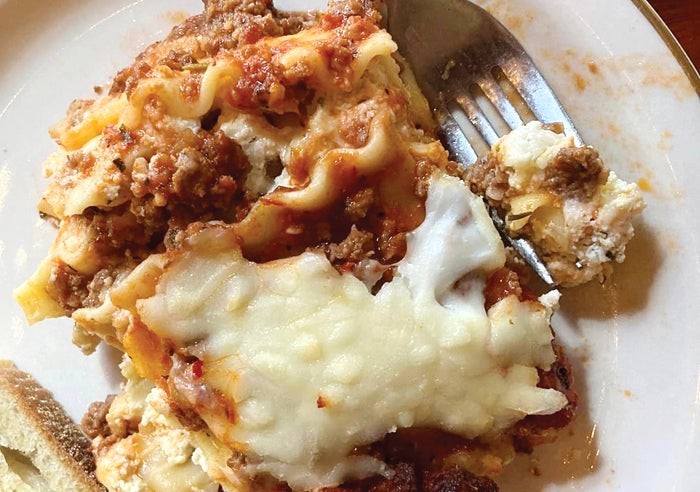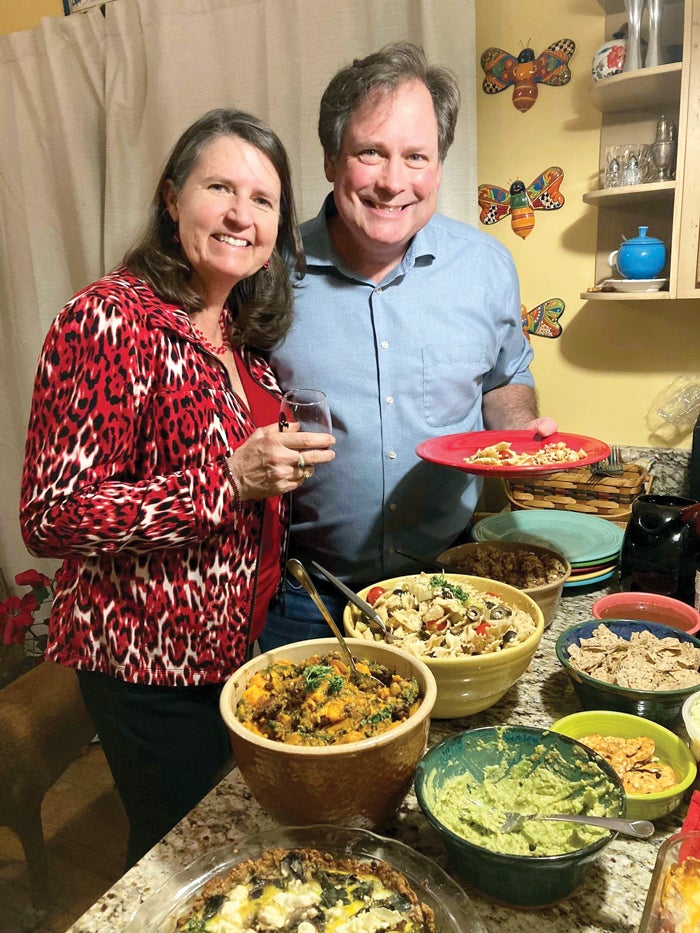Get started on your family cookbook
Published 12:00 am Wednesday, May 2, 2012
By Deirdre Parker Smith
dp1@salisburypost.com
You’ve said it over and over: “One day I’m going to put together all those recipes my Mom used” or “I must get Aunt Sally’s pineapple cake recipe.”
Don’t wait. Grandmothers pass away, mothers don’t write things down, you get busy with something else.
The Farm at Weathers Creek recently offered a workshop, Cooking Up Family History, featuring Raleigh cookbook writer Debbie Moose, former food editor of the Raleigh News & Observer and a former Salisbury Post employee.
Getting the recipes is the most important part, Moose said, and often the hardest.
If you go to Grandma and ask for a recipe, the typical response might be, “Oh, I don’t have a recipe; I just add a little of this, a little of that.”
So, Moose said, what you do is stand next to her while she’s cooking. “Every time she gets ready to put something in the pot, stop her, hold her hand and measure whatever is in it.”
That’s one way to start building the family cookbook.
Moose showed variations that range from family history with recipes to more commercial recipes with a little history.
One cookbook included family stories with the recipes and photos of ancestors. Another one used photos of the original recipe cards, complete with handwritten notes on the back. Another had an extensive family history with photos at the beginning, followed by recipes.
Moose suggests getting into conversations about the recipes with your loved ones, trying to get details from gentle questions: What makes your deviled eggs so good, Grandma?
Those at the workshop were in various stages of gathering and organizing — Marie (we’ll just use first names) had all the recipes and wanted help putting them together with stories and pictures; Sam had a deep interest in family history and thought a cookbook was one way to tell the story.
Some people still had living parents and grandparents; others had already lost their family members. Anita said she was no cook and came for her daughter, who is a good cook and wants to do something for their large family. Anita had some magic, too — original recipe cards from her mother, typed on front, with handwritten notes on back.
“My people are getting gone,” Cindy said. “I gotta get these things written down.” Plus, she said, she had the “best BSer’s” in her family, perfect for storytelling.
“Don’t let truth stand in the way of a good story,” Moose advised.
Moose wasn’t always interested in food. Her mother kept the family fed, but that was it. Her grandmother made the good stuff, including the deviled eggs that inspired Moose to write an entire cookbook of deviled egg recipes. When she was a feature writer, she realized food is what people talk about when they remember a loved one.
She suggests doing a little genealogy with the recipes, not just recipes with a little history.
“It’s a lot of work to do by yourself,” she said, suggesting a helper for the project.
“Think about photos. You don’t have to have them, but it really enhances the recipes.”
Don’t be afraid of old-fashioned ingredients, like corn flakes, which were an inexpensive addition back in the 1950s.
It’s interesting to see how food has changed over time. When Cheez Whiz came out, housewives embraced it as a cheap and easy recipe addition, just as they latched on to Velveeta.
Barb said her nieces and nephews would not eat most of the food Grandma made back when. “Ask for a couple of their recipes, then,” Moose said. “You can’t tailor a family recipe book to modern eating habits; that’s not the point.”
Get input from as many family members as possible, and from friends, if that’s how the recipe came into use. Several participants said their mothers only cooked out of necessity. Grandma did the special stuff.
To collect recipes, take several approaches. Set up a Facebook page or a website to collect recipes if your family is far-flung. But don’t rely on computers only.
Set a deadline. Even if it’s artificial, it encourages people to get their recipes to you.
Collect at family reunions, weddings, even funerals. Ann Wicker, one of the organizers for the Weathers Creek writers series, passed out her mother’s cheese straw recipe at her funeral. Everyone was delighted.
Create a format for the recipes to keep them consistent; make clear how to list measurements (Moose likes everything spelled out, just to be clear — teaspoon and tablespoon).
Once you’ve got the recipes, get someone else to look at them. A recipe that says “one can milk” leaves a lot of room for error, as does an instruction to simply “bake until done.”
Some of the people at the workshop wondered about creating a CD or a blog to share the recipes. That’s fine, Moose said, but remember the ones who don’t have or don’t use computers.
Try cooking with the person whose recipe you’re getting and take photos, of young and old alike. One day the young folks will want something to look back on, too.
Finding an old grocery list or price list to use in the book would be fun, too.
In collecting recipes, you’ll have some decisions to make: to tweak or not to tweak — whatever you do, it has to work; did Grandma leave something out?
“Some people do that, like forgetting to tell you it’s self-rising cornmeal, instead of regular cornmeal,” Moose said.
Never assume anything. Is the milk whole, 1 percent or skimmed? Is the flour self-rising? How large are the eggs? What size is that can of pineapple?
Be specific, list ingredients in order, and if it’s a multi-part recipe, list ingredients separately or be clear what ingredients go into which part.
Terms like low oven, cold oven don’t mean much to us now. Some terms referred to woodstove cooking.
Be careful with baking recipes, especially with temperatures and times.
Another Moose tip: use the recipe with the original ingredients, then make a note of the modern equivalent, but be careful with substitutes — not all are equal.
If you get the same recipe from more than one family member, credit both contributors and list the variations.
To organize the recipes within the book, you can do it the traditional way: appetizers, salads, main dishes, vegetables, etc.
“You can start with your oldest family members and work toward the youngest,” Moose suggested. “You can focus on holiday food, a family occasion, a certain kind of food (like desserts) or ethnic foods” from the family’s ancestry.
“You need to organize it so it’s easy to use.”
Moose said a table of contests is a must; an index is hard, but useful. An index can be alphabetical by recipes or by the name of the cook.
“Going through the recipes takes the most time,”Moose said. “You may end up with a favorite recipe that doesn’t make enough sense to even try.” Hit Google and see if there’s anything similar out there.
Try to find people who remember what it tastes like, what it looked like.
When you’ve finally got it all together, you can use one of the publishers that specialize in cookbooks; you can print the recipes yourself and create a three-ring binder notebook that can be added to; you could even go to an office supply shop or work center and have it bound in a plastic cover. You could use an on-demand publisher.
Those at the workshop planned to present their cookbooks as a wedding gift or a family gift for the holidays. Some just wanted the treasure created by gathering family recipes.





